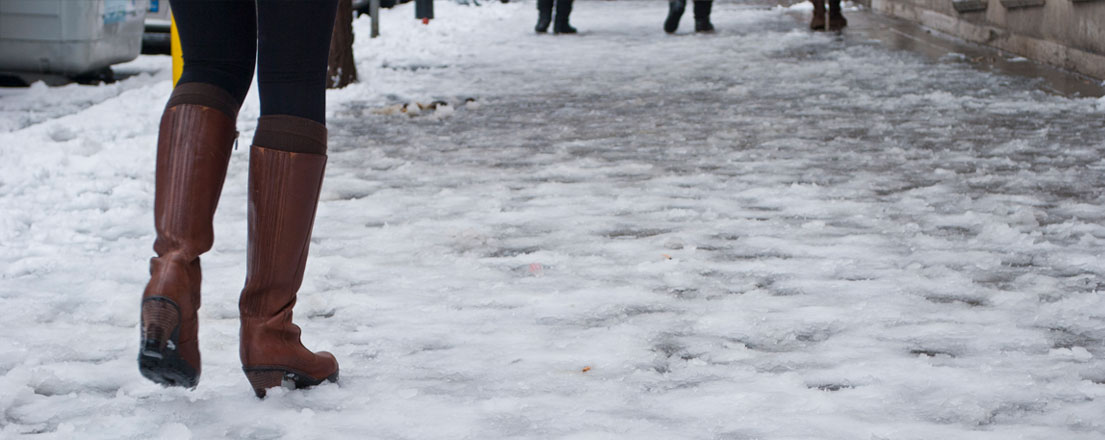
Snow Safety: Expert Tips for Braving Winter Weather
Kids might love Michigan’s notoriously cold and snowy winters, but they are prime time for accidents and injuries among older adults says Dr. Ritu Zacharias, director of Medical Spine Services and Psychiatry in the Department of Neurosurgery at Henry Ford West Bloomfield and co-director of the Senior Spine Pathway.
The most common dangers are falls, injuries from snow shoveling, frostbite and hypothermia.
Here’s how to stay safe this winter
Prevent falls
Muscles stiffen up the cold, increasing the likelihood of falls, Zacharias says. To reverse those effects, get 15 to 30 minutes of daily exercise. “The more you move, the less likely you are to lose bone density or muscle mass,” she says. That reduces the risks of falling and bolsters your ability to heal.
She also suggests avoiding snowy or icy sidewalks and, instead, walking in a mall or using a treadmill for exercise. Other safety steps include signing up for a yoga or tai chi class to improve balance; walking in a pool to build muscle flexibility in joints, knees, hips or spines; and not lifting heavy objects outdoors that can knock you off balance.
Shovel safely
Asking a neighbor kid to shovel your sidewalk and driveway is the best route. A snow blower also promotes safety. If you plan to shovel, reduce your risk of injury with a few simple precautions, says Christina Eyers, who leads athletic training at Henry Ford Sports Medicine in the metro Detroit area.
- Warm up indoors for 5-10 minutes to get your blood flowing. Do some quick chores, like sweeping the floor. Or try some mild exercises, such as riding a stationary bike or climbing the stairs.
- Work in sections and take frequent breaks, especially if the snow is heavy. Don’t shovel large loads of snow to hurry the job.
- Drink plenty of water. Staying hydrated keeps the blood flowing. Dehydrated muscles cramp more easily. Alternate sides when throwing the snow to balance the stress.
- Use proper form: Bend at the knees, lift the snow and toss it forward and out. Don’t rotate your body.
Fight frostbite and hypothermia
Prolonged exposure to cold, especially in high humidity, can lead to hypothermia. That means body temperatures dropping to below 95 degrees Fahrenheit. Older adults (and young children) are at special risk.
Extreme cold can also cause frostbite, which damages the skin and can cause permanent tissue loss. It’s most common in fingers, toes, cheeks, ears and the nose. Older adults with heart disease and other circulation problems are especially at risk.
Dressing appropriately is essential to avoid frostbite and hypothermia, Eyers says. That includes increasing circulation by wearing loose-fitting layers, such as long underwear, a shirt, sweater and a waterproof coat.
Wool socks and waterproof and skidproof boots help keep feet warm. Avoid multiple pairs of socks, which reduce circulation. Use waterproof gloves and don’t wear knitted mittens.
Prevent pneumonia
About 40 percent of older adults with pneumonia are hospitalized and face serious consequences, including death, reports the American Geriatric Society, or AGS. Of the 200,000 annual cases diagnosed in the United States, 40,000 – or one in five – die.
Age and related health issues aggravate risks, including chronic obstructive pulmonary disease, known as COPD, congestive heart failure and weight problems.
To reduce your risk, the AGS recommends a yearly flu shot and both pneumococcal shots (PCV13 and PPSV 23), which help prevent pneumonia and blood and brain infections.
HAP members may be eligible to receive flu shots from an approved flu shot provider. Please check with HAP Customer Service to see whether you’re covered. Categories: Get Healthy
